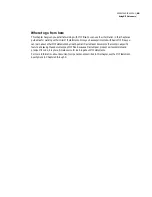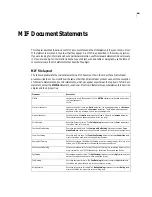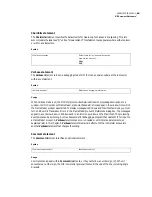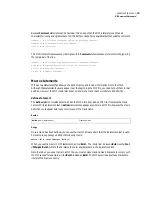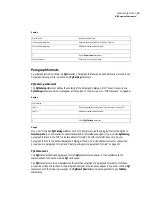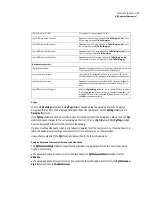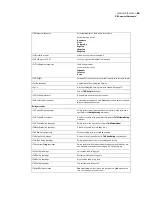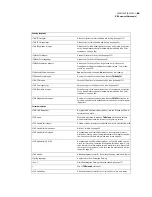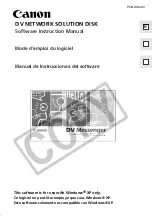
71
ADOBE FRAMEMAKER 6.0
MIF Document Statements
include statement
The
include
statement reads information from other files. It is similar to an
#include
statement in a C
program. When the MIF interpreter reads a MIF file, it replaces the
include
statement with the contents of
the included file. An
include
statement can appear anywhere in a MIF file. However, make sure that the
contents of the included file appear in a valid location when they are read into the MIF file.
Syntax
Usage
The pathname argument specifies a UNIX-style pathname, which uses a slash (/) to separate directory
names (for example,
/usr/doc/template.mif
). For the Macintosh and Windows versions of FrameMaker
products, use the following guidelines for specifying absolute pathnames:
•
For Macintosh versions, start an absolute pathname with a slash and the volume name. For example, to
include the file
MyFile
from the volume
MacVolume
, specify the pathname
/MacVolume/MyFile
.
•
For Windows versions, start an absolute pathname with the drive name. For example, to include the file
myfile.doc
from the directory
mydir
on the
c:
drive, specify the pathname
c:/mydir/myfile.doc
. Don’t start
an absolute path with a slash (/).
If you specify a relative pathname, the MIF interpreter searches for the file to include in the directory or
folder that contains the file being interpreted. In UNIX versions of a FrameMaker product, the MIF inter-
preter also searches the
$FMHOME/fminit
and the
$FMHOME/fminit/filters
directories for a file with a
relative pathname.
In general, you would use an
include
statement to read a header file containing
define
statements that a
filter needs to translate a file. Isolate the data in a header file to simplify the process of changing important
mappings. You can also use an
include
statement to read in a template file containing formatting infor-
mation. Your application can then simply generate a document’s text. For more information, see
“Including template files” on page 55.
Conditional text
FrameMaker documents can contain conditional text. In a MIF file, the condition tags are defined by a
Condition
statement, which specifies whether the condition tag is hidden or shown. The condition tags for
a document are stored in a
ConditionCatalog
statement.
Within the text flow,
Conditional
and
Unconditional
statements show where conditional text begins and
ends.
ConditionCatalog statement
The
ConditionCatalog
statement defines the contents of the Condition Catalog. A MIF file can have only
one
ConditionCatalog
statement, which must appear at the top level in the order given in “MIF file layout”
on page 66.
include (
pathname
)
Reads in a file
Summary of Contents for FRAMEMAKER 6.0
Page 1: ...MIF Reference Online Manual FrameMaker 6 0 Adobe ...
Page 15: ...15 ADOBE FRAMEMAKER 6 0 Introduction ...
Page 159: ...159 ADOBE FRAMEMAKER 6 0 MIF Book File Statements ...
Page 232: ...232 ADOBE FRAMEMAKER 6 0 MIF Asian Text Processing Statements ...
Page 252: ...252 ADOBE FRAMEMAKER 6 0 Examples ...









